From new nurses being plunged into the respiratory wing fresh out of university to student pharmacists juggling personal wellbeing with professional obligations to public health, healthcare-workers-in-training are dealing with unprecedented circumstances
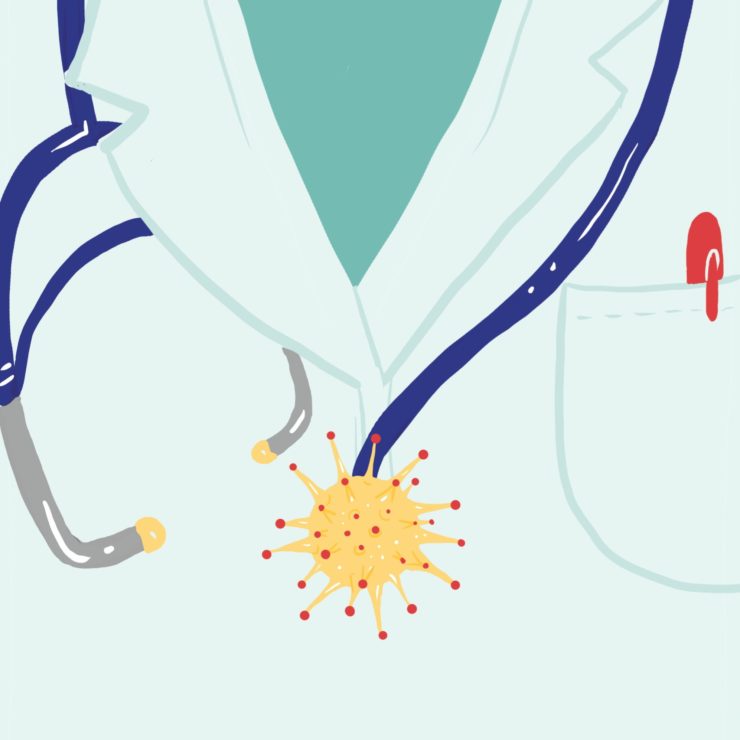
The spread of COVID-19 has prompted a number of government-mandated measures intended to flatten the curve. Meanwhile, universities and college campuses across the country have been forced to cancel in-class instruction and in-person support services, shifting almost entirely to online delivery. Amidst these restrictions, the work of essential workers — particularly those in healthcare — continues, despite risks to personal health.
Among them, those still in school to become healthcare workers have found themselves involved in the fight against the virus.
A practicum on the front lines
As of May 11, Vancouver Island Health Authority had 125 confirmed cases of COVID-19, with an overall recovery rate of 88 per cent since the beginning of the pandemic. Just 25 cases on the island have ever been hospitalized.
Alex* is a recent graduate from the Bachelor of Science in Nursing (BSN) degree at the University of Victoria. During her final practicum, she worked in the respiratory unit at Royal Jubilee Hospital. Since COVID-19 causes respiratory issues, coronavirus cases in the South Island Region severe enough to require hospitalization are treated at this unit.
Alex says that like many others, she underestimated the severity of the virus at the start. Late into her practicum term, she began to realize just how rapidly COVID-19 was spreading and soon found herself on the front lines.
“I remember one day on the floor, the manager was saying we were starting to have a shortage of N95 masks because people were buying them up for personal use,” says Alex. “That’s when I realized, wait a minute, maybe this is a bit bigger than I originally thought.”
An email from the UVic School of Nursing sent a few days before nursing students were asked to cease practicum terms in March emphasized the professional obligation of student nurses to provide public healthcare — even during extraordinary circumstances like a pandemic.
“We aren’t nurses, we aren’t getting paid, we aren’t covered under the union or WorkSafe protection that [registered nurses receive], and we’re paying a lot of money to be there as well,” says Alex.
Alex felt there was also ambiguity from UVic administration surrounding how nursing students should proceed as public health procedures limiting public gatherings were being put into place. Before practicums officially ceased in mid-March, Alex says some of her classmates were concerned as their work was potentially putting the lives of their loved ones at risk. With a high proportion of BSN students going into the field as a second career, Alex says many already have families or have other familial obligations to consider before working on the front lines in the fight against coronavirus.
“There are people who had young kids at home or are pregnant, and they were just not getting any guidance or support around that,” Alex said.
Many nursing students also work as healthcare assistants in long-term care facilities, in addition to completing in-hospital practicums.
“There’s a whole ethical boundary. If you’re working as a nursing student in a hospital with COVID patients, should you be going and working with vulnerable people on your days off? Probably not,” Alex said.
Alex says she was not made aware of any university policy that would have minimized cross-facility contamination.
Post-practicum, Alex began working full-time shifts as a licensed nurse in late April.
Alex says there are currently two checkpoints about 30 metres apart before entry into the respiratory and general medicine wing at Royal Jubilee. Only patients who are critically or terminally ill are permitted to receive visitors. Alex says hospital wings that typically allow children, spouses, and friends to visit are now largely void of the presence of anyone except essential workers. A big part of her job now is ensuring patients can connect with loved ones over the phone.
Accounting for issues of marginalization and accessibility amid COVID-19
While some health workers like Alex directly treat COVID-19 patients, others are focused on accessibility issues that have been particularly highlighted by the pandemic.
Olvie Li is a nurse with over six years of experience currently pursuing a Master’s degree from UVic in Social Dimensions of Health. While continuing her program full-time, she holds two part-time jobs that directly engage with public health.
Li works with public health units on Vancouver Island to administer testing for COVID-19. Li also works with Doctors of the World, a human rights group that performs active healthcare outreach. The organization has adapted its usual mobile clinic service in Victoria to focus on street outreach, handing out harm reduction supplies, over-the-counter medications, and more to those in need.
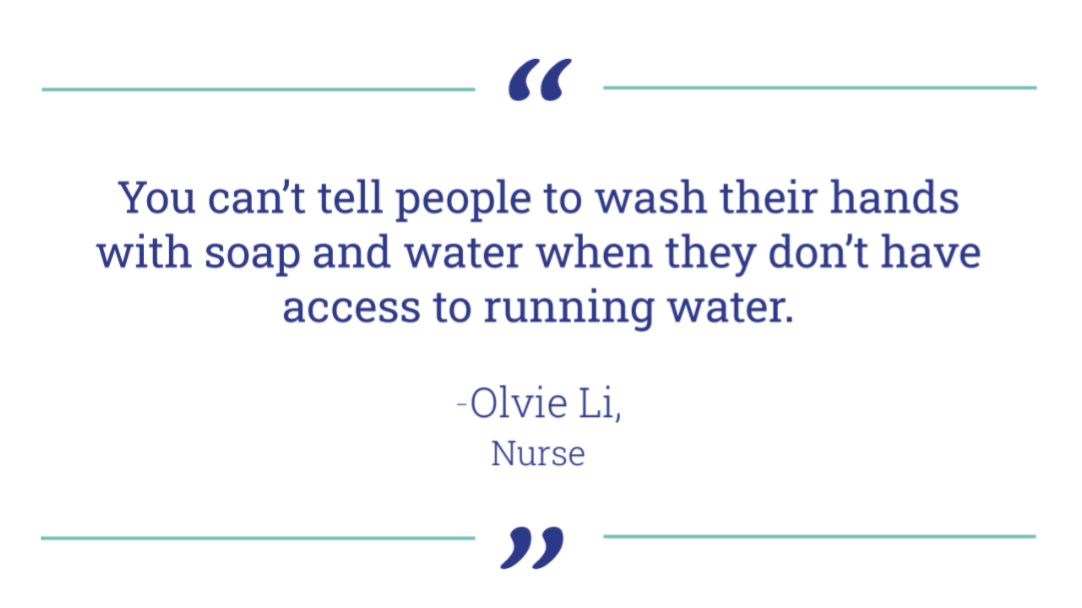
She stresses the importance of recognizing the factors beyond the biological that people may not typically think of that result in inequalities of accessibility and treatment for COVID-19.
“The street community [in Victoria] doesn’t have access to clean water or housing,” says Li. “When we place policies on the entire country, saying we need to physically distance and self-isolate — those rules don’t apply when you don’t have a house, running water.”
“You can’t tell people to wash their hands with soap and water when they don’t have access to running water.”
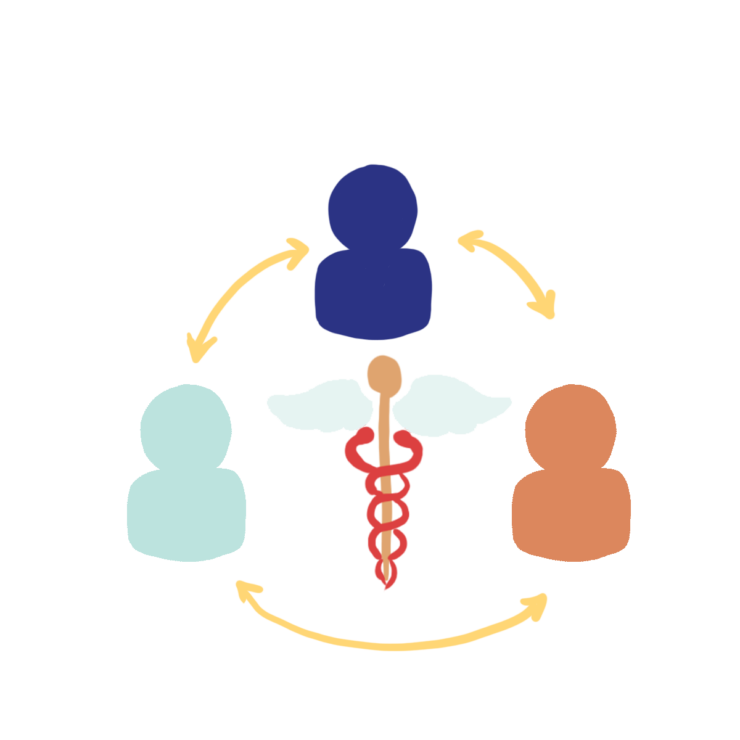
Policymakers are now challenged to contend with configuring public health measures that prioritize the wellbeing of their citizens without exacerbating existing inequalities impacting the health of those already marginalized.
“Indigenous communities also have different factors that affect their health that don’t affect non-Indigenous people,” Li says. “You have to take into consideration their intergenerational traumas, colonization, removal and dispossession of land. We like to make things neat and streamline it … but it’s really looking at intersectionality — how every person, depending on their race, religion, culture — has things that impact their health.”
All these dimensions factor into the accessibility, treatment, and experience of healthcare, with very real implications for COVID-19. The pandemic’s origin in China has sparked anti-Asian racism across North America: Mid-March in Montreal, a 44-year-old Korean man was stabbed outside a grocery store, while an Asian-American woman was attacked with battery acid in Brooklyn, New York in early April. In B.C., Premier John Horgan made a statement early May condemning the rise of hate crimes relating to COVID-19 in the province, stating that “hate has no place in British Columbia.”
Li says that while she hasn’t witnessed any direct discriminatory experiences in Victoria, any misconceptions surrounding individuals of East Asian descent as inherent carriers of the virus can certainly impact their own access to healthcare and have mental health impacts.
An American Med student perspective
Mark D’Alesio is a medical student at the University of Pittsburgh, and grew up in Westchester County, New York. The county had over 28 000 cases as of April 27, so D’Alesio chose to remain in Pittsburgh, believing it would be safer than travelling home.
Intending to complete a summer research project at ISMETT, a transplant hospital based in Palermo, Italy, D’Alesio’s plans were abruptly impacted by both local “stay-at-home” orders and international travel restrictions. D’Alesio states that there is still a marginal chance he could complete his research later in the summer, but doubts the likelihood of it materializing.
As a first-year medical student, D’Alesio found most of the modifications being made to his curriculum were transitioned relatively smoothly into online formats. D’Alesio has access to recorded lecture material from the previous year, which is being supplemented with updated information as necessary.
He mentions that doctors across the board, regardless of the field they’re in, are professionally affected by COVID-19 to varying degrees.
“Some doctors are completely out of work, while others are being inundated by patients,” he says.
Inconsistencies across the nation in concentration of supply-and-demand for healthcare workers remain problematic, with leaders like Governor Andrew Cuomo calling on out-of-state healthcare workers to help New York in the battle against COVID-19. Cuomo also stated via Twitter early April that he would sign an executive order to allow graduating medical students to begin practicing immediately for the same reason.
Rotations and adaptations for upper-year students

For students further along in their medical degrees, greater complications have arisen due to COVID-19.
Peter Chung is a third-year student in the Faculty of Medicine at McGill University, who was completing clinical rotations at various hospitals around Montreal, Quebec. The province has been the worst-hit region in Canada, with over 35 000 confirmed COVID-19 cases as of May 10. Chung was completing his orthopedic surgery rotation in mid-March when the faculty sent out notice for students to cease all clinical activity.
Like many universities across Canada, initial communication from McGill administration regarding modifications resulting from the pandemic was vague. It took the form of institution-wide emails and daily video updates from Associate Provost Chris Buddle that were posted on Facebook.
“It was a lot of language about nothing, precisely because they hadn’t made any solid decision, and they didn’t know that was going on — neither did we,” says Chung.
The Faculty of Medicine has made efforts to allow students to continue completing the curriculum as much as possible, Chung says. For instance, students were invited to Zoom meetings and permitted to ask questions directly to faculty heads and administration about how their coursework would be impacted.
It was initially expected that medical students would return back to “clinicals” to contribute as part of the essential healthcare workforce, but the faculty eventually decided to pull its students from rotations.
On March 13, the provincial government of Quebec announced the temporary closure of universities and McGill decided to transition into remote learning soon after.
Students in Chung’s cohort have been adapting to the changes by keeping up with online coursework, while also carrying out volunteer projects at local clinics or hospitals to help the local Montreal community and to gain co-curricular credit. Other volunteers have called to check in on patients receiving home care or have contributed to a COVID-19 patient database for the Jewish General Hospital.
There are other aspects of clinicals that remain uncertain for students like Chung.
The third year of medical school is also a time for medical students to develop their portfolios to prepare for fourth-year residency “matches,” a hyper-competitive process that sees hundreds of students compete for spaces in hospitals across Canada. Students strengthen their portfolios by strategizing which electives to take, taking part in research, and getting references from their clinical experience.
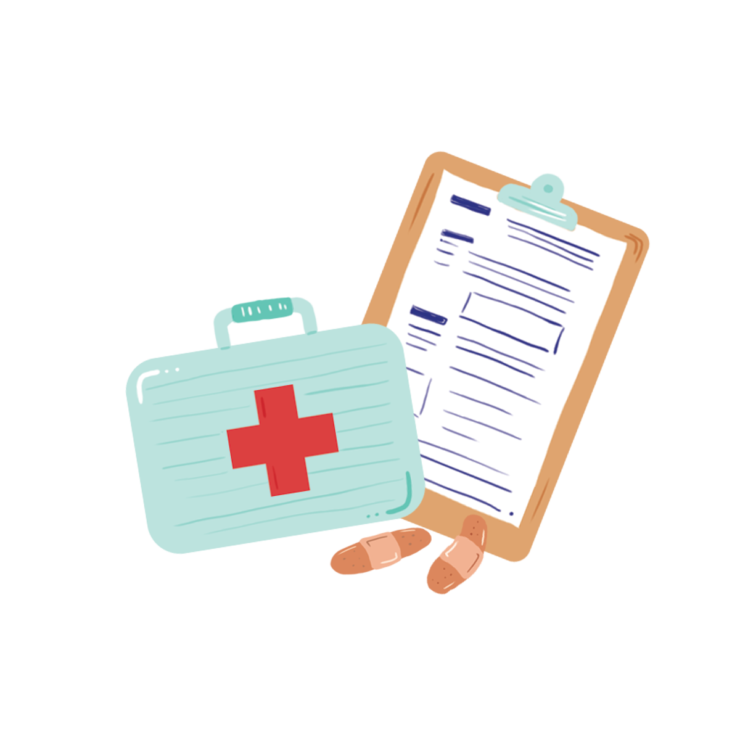
Like other medical students across Canada, however, McGill’s third-years were concerned about how scheduling shifts would impact their ability to complete portfolio components.
For notoriously competitive specialties like dermatology, careful planning for electives and a strong portfolio are critical. Specialties are critical entryways for further sub-specializations — for instance, Chung must specialize in internal medicine before he can become a hematologist, or a physician specializing in blood.
He remains optimistic, despite modifications that have been made to his med school experience.
“This kind of chaos brings us a lot of opportunities to advance and get ahead on what we actually want to do,” says Chung.
PharmD students filling in to fill prescriptions
During Jamie’s* third year of her PharmD (Doctor of Pharmacy) degree at the University of British Columbia, she works at a high-traffic retail pharmacy in Richmond, B.C., as part of the community rotations that supplement her academic curriculum.
Jamie says that her pharmacy, like many others, has been markedly busier than usual since the pandemic first began.
“I remember one shift [in early March], the phone was just ringing off the hook and nobody could answer — we were just trying to handle what was in the store already,” says Jamie. “At one point, we just lowered the volume of the ringing. It was just driving us all crazy.”
The role of pharmacy students amidst the pandemic differs from student doctors, for instance. While the latter are required much more intensive medical training before they are permitted to work, PharmD students are expected to complete several work terms throughout the program to gain practical experience.
Some of Jamie’s friends took on 40 hour work weeks on top of academic work they’re expected to complete on time as well. She says that some feel caught between professional demands in providing a public health service and their families, who may not understand the augmented need for pharmacists to take on additional work obligations.
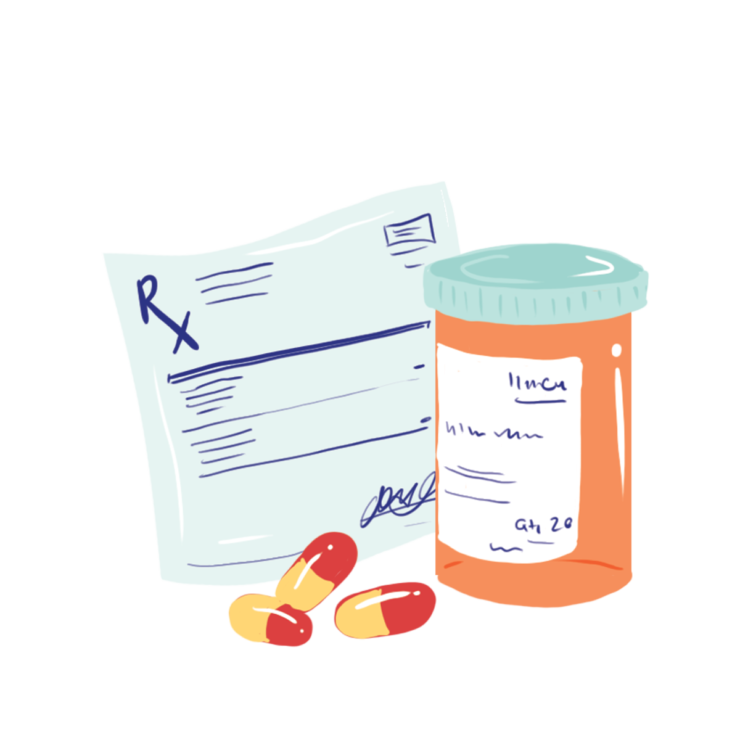
The typical pharmacy space is also only slightly larger than a doctor’s office. With multiple pharmacists working within a tight space, effective physical distancing at the workplace becomes virtually impossible.
This becomes a particular concern for transmission, especially for pharmacists cohabiting with vulnerable persons and working alongside PharmD students.
Still, most pharmacies in B.C. now face increased pressure to keep up with public demand to maintain regular dispensing services and respond to public inquiries on coronavirus prevention or treatment. Many have called in PharmD students, in particular, to fill in shifts, as young people on the front lines face the least risk after exposure to COVID-19.
Academically, pharmacy students at the UBC Faculty of Pharmaceutical Sciences are also being transitioned into online platform learning. Content delivery has been modified, but the actual content has largely been left unchanged.
Digital platform “Proctorio” is also being used for the invigilation of pharmacy exams. In addition to accessing students’ cameras and microphones, the platform also involves room scans, where students turn their web cameras “in a 360-degree pan” around the room to enforce academic integrity.
Jamie says there has been some frustration among the general public due to misunderstanding about how pharmacists have been modifying their services due to COVID-19. Drugs that could previously be filled months in advance are now being limited to deal with increased public demand, but some customers have expressed feeling taken advantage of over dispensing fees, for instance.
“It’s a just time when everyone needs to be patient with each other,” Jamie says.
Re-oriented lives for healthcare workers and beyond
B.C. is beginning to reopen, with a four-phase plan announced on May 6 detailing how restrictions would be slowly eased. While the approach is still a cautious one, the case figures for B.C. are well below those of other provinces and have shown significant improvement over time — meaning healthcare workers (and students) may feel pressure ease off of them slowly.
While medical students have undoubtedly been impacted by COVID-19, they are far from the only healthcare workers in training whose lives have seen reorientation on professional, personal, and academic levels. From working on the ground at COVID-19 testing sites to manning retail pharmacy outlets, students in healthcare are dealing with unprecedented circumstances and overcoming challenges that will remain unparalleled until another global health crisis hits.
*Some sources in this article have requested that their names be changed to avoid possible academic and employment impacts resulting from their statements. As such, pseudonyms have been used for “Alex” and “Jamie.”








